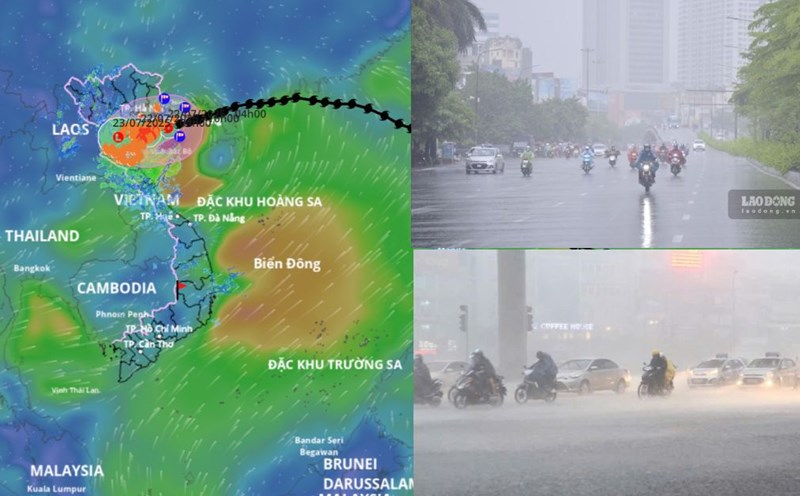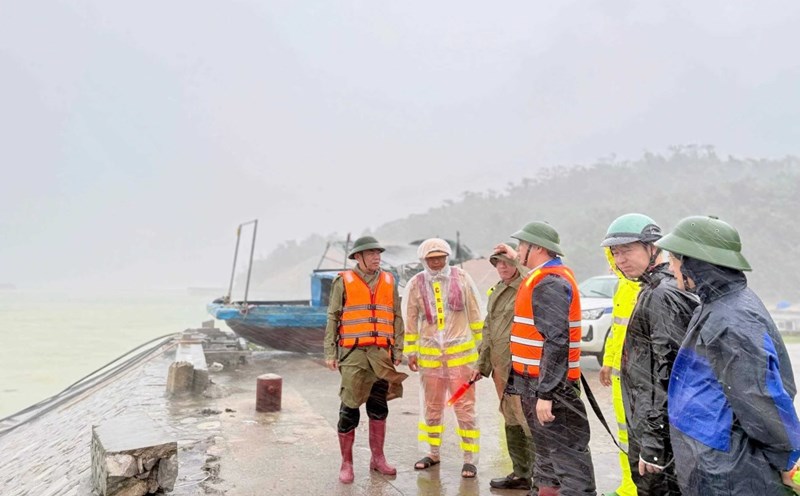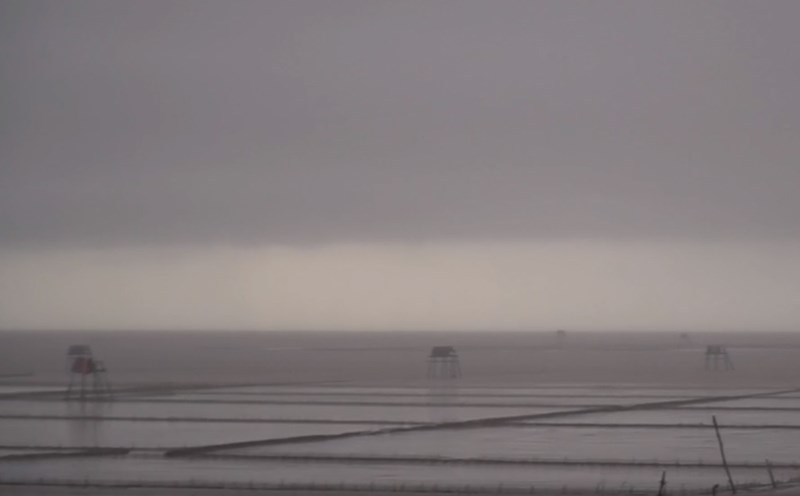Hai Phong completes evacuation before 8:00 p.m. on July 21
In Hai Phong - one of the key coastal localities, rain started to appear from the evening of July 20 to the morning of July 21 with common rainfall of 14-40mm. Recorded at Ngoc Hai Fishing Port (Do Son), fishing vessels have returned to anchor safely. As of 9:00 a.m. on July 21, 1,657 vehicles with 4,668 workers operating at sea had entered safe shelters, no vehicles had lost contact or operated in the danger zone.
The city has planned to evacuate 6,668 households (equivalent to 19,701 people) from high-risk areas such as old apartment buildings and key dyke areas. Chairman of Hai Phong City People's Committee Le Ngoc Chau requested to complete the relocation before 8:00 p.m. on July 21. Localities are required to ensure essential conditions at the reception point, announce the hotline phone number and not leave any missing subjects in need of support.
In particular, more than 35,400 officers and soldiers from the Military Command and the City Police, along with more than 34,000 shock forces in communes and wards, have been mobilized to be ready to respond. With the spirit of not being subjective, Hai Phong City activates the entire natural disaster prevention and control system at the highest level.
Quang Ninh brings 7,518 people in aquaculture areas to shore safely
In Quang Ninh - a locality forecast to be directly affected by storm No. 3 - the province has completed the safe return of 7,518 people in aquaculture areas to shore. The Military Region 3 Command and the Provincial Military Command mobilized more than 2,600 officers, soldiers and hundreds of specialized vehicles to be ready to respond 24/24h. Vietnam National Coal and Mineral Industries Group (TKV) also requested units to stop tunnel and open-pit mining activities on July 21 to avoid risks.
In Ninh Binh province, hundreds of fishing vessels have come to anchor at Ninh Co port. Fishermen proactively reinforce their boats to avoid chaos. All 1,861 fishing vessels and more than 5,700 workers have safely returned to shore. The province also banned sea travel from 7am on July 21 and stopped ferry routes at 5pm to ensure safety.
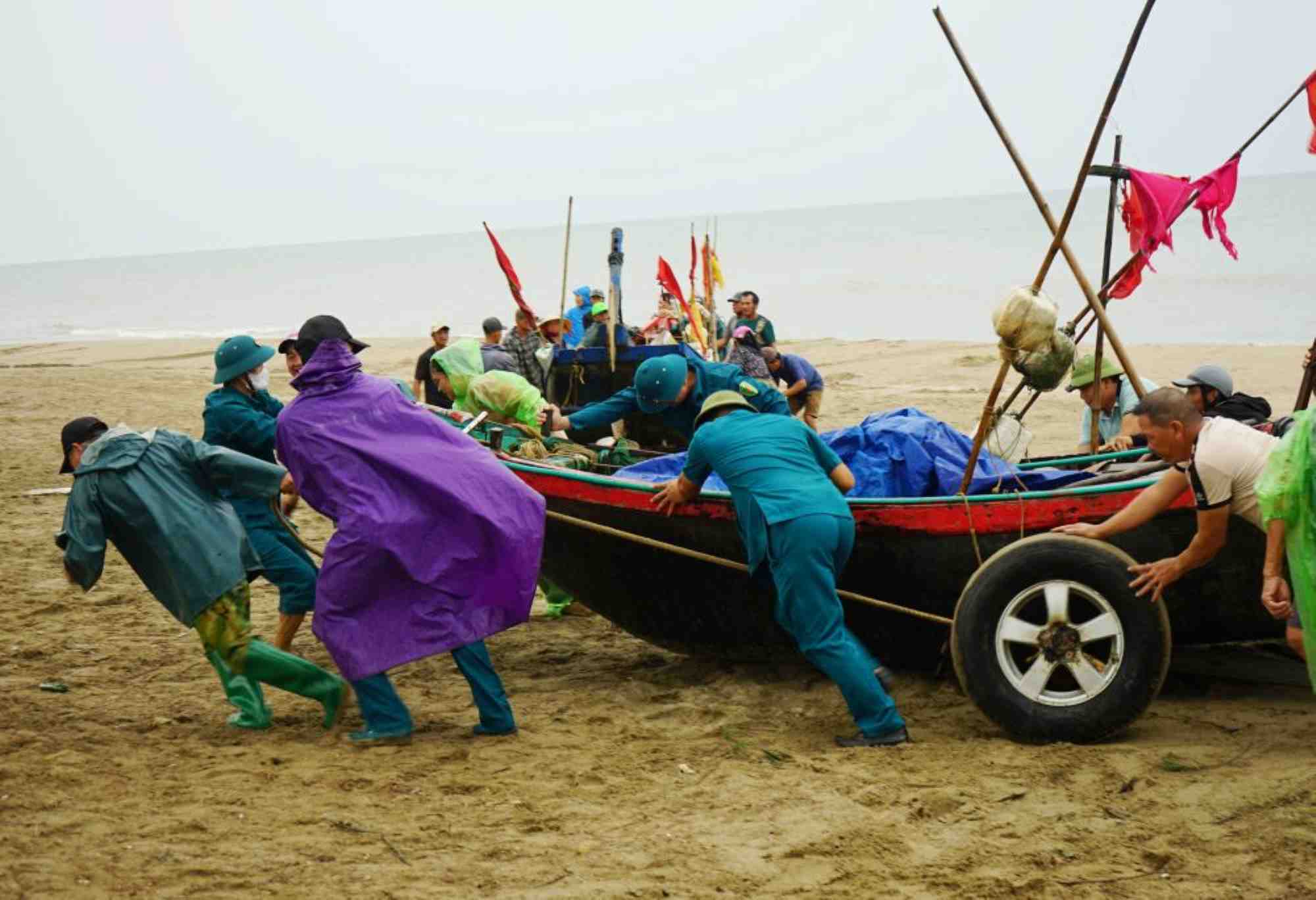
Thanh Hoa, Nghe An, Ha Tinh ban the sea, relocate people, support fishermen to take shelter from the storm
In Thanh Hoa, the sea ban officially took effect from 8:00 a.m. on July 21. The Border Guard uses boats, canoes and loudspeakers to each boat, coordinating with localities to guide fishermen to take shelter. In Sam Son City, hundreds of people were supported by the authorities to pull their boats ashore. Provincial Party Secretary Nguyen Doan Anh requested the whole province to thoroughly implement the "4 on-site" motto (on-site command; on-site forces; on-site vehicles and supplies; on-site logistics), especially strictly controlling ships and boats, not letting ships leave ports after the ban on the sea.
Nghe An bans the sea from 5:00 a.m. on July 21. By 10am, 2,807 vehicles with more than 12,000 workers had entered the shelter, while 9 vehicles offshore had been contacted and instructed to move safely. Previously, the storm on the afternoon of July 19 caused great damage: 1 person died, 4 people were injured, hundreds of houses were damaged. The province has raised the warning level and mobilized forces to support overcoming the consequences.
Ha Tinh issued an urgent telegram from July 20, requiring all ships not to go to sea from July 21. The sea area is forecast to have winds of level 7, gusts of level 9, waves 2-4m high, very rough seas. As of the morning of July 21, 3,979 vehicles with nearly 11,000 workers have come ashore safely, while the remaining 4 vehicles are seeking shelter. The province is continuing to search for 2 missing people in the storm on July 19.
Quang Tri - with more than 8,200 boats and 25,800 workers - by 10:00 on July 21, more than 24,000 people and 7,900 boats had been brought ashore. Propaganda and storm warnings were deployed through radio, social networks and live in the area. The Provincial People's Committee requires maintaining a 24/7 on-duty regime, especially in mountainous areas, along rivers, and areas at risk of landslides.
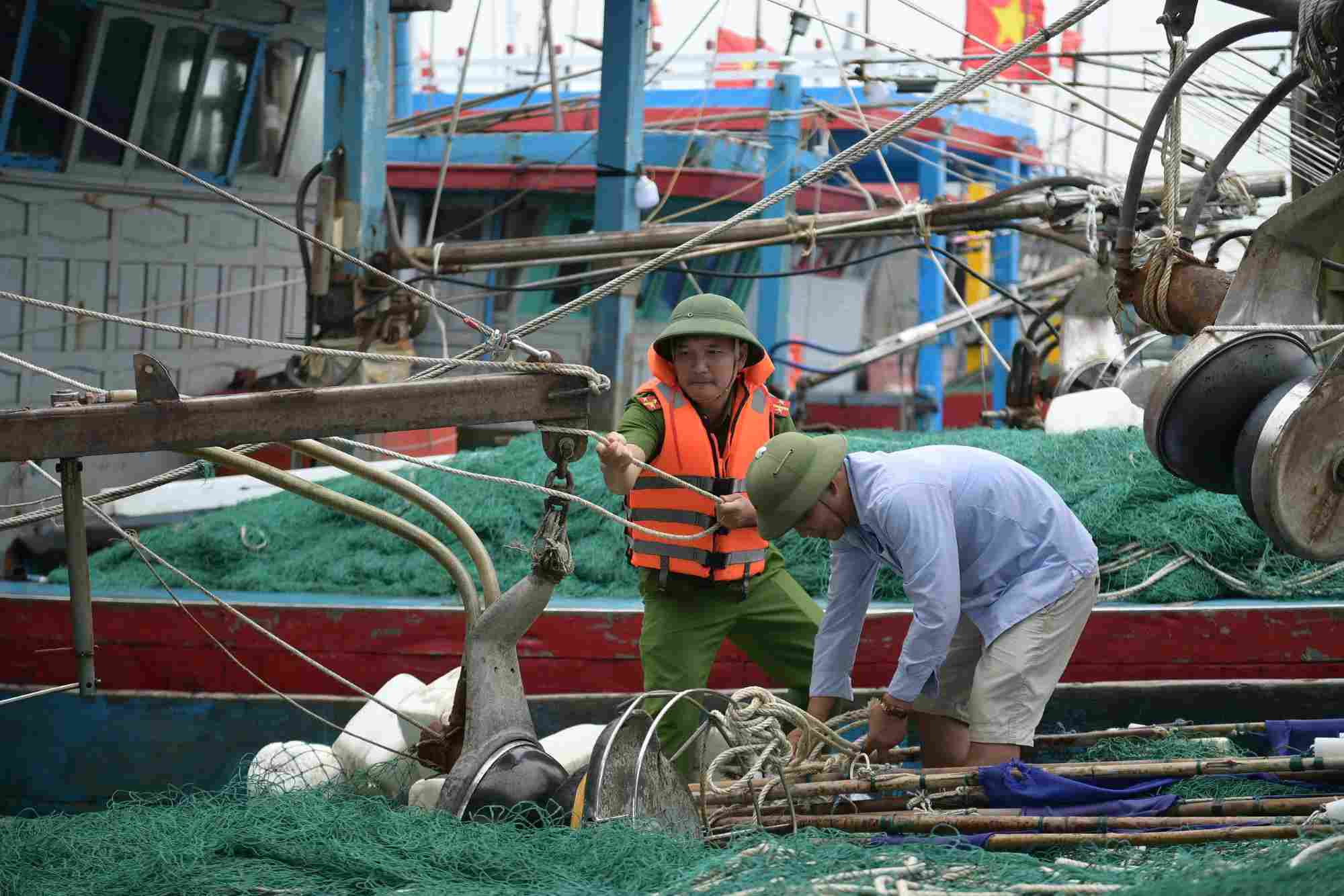


Hung Yen: Preschool children are off from school from the afternoon of July 21
In Hung Yen, communes and wards have organized urgent meetings with the Civil Defense Command to review low-lying areas, disadvantaged households, and make timely evacuation plans. Militia and shock forces are required to be ready to support people. Preschool children are off from school from the afternoon of July 21 to ensure safety.
Armed forces are ready to respond to storm No. 3 on the spot
In the face of the complicated developments of storm No. 3 (Wipha), the Army and Police forces across the country have been ordered into positions, ready to respond according to the "4 on-site" motto (4 on-site command; on-site forces; on-site vehicles and materials; on-site logistics), determined to protect the safety of people's lives and property.
On July 21, the General Staff of the Vietnam People's Army issued a telegram requesting agencies and units in the entire army to continue to thoroughly grasp and strictly implement the telegrams directing superiors on responding to storm No. 3 and heavy rain in the North and North Central regions. Border guards from Quang Ninh to Ha Tinh are required to closely coordinate with localities to count, notify, and guide ships to move to safe shelters; Absolutely do not let people stay on ships, cages, or hut when the storm makes landfall.
On the same day, the Steering Committee for Natural Disaster Response and Search and Rescue of the Ministry of Public Security also issued Official Dispatch No. 08/CD-BCD requesting local police to proactively mobilize standing forces, ready to deploy storm prevention and control plans.
The police are assigned to coordinate with the Border Guard to count dangerous areas, instruct ships to anchor safely, organize evacuation of people in low-lying areas, coastal areas, areas at risk of landslides and deep flooding; be ready to enforce if people do not comply and leave dangerous areas.
In addition, the Traffic Police, Fire Prevention and Rescue Police, and Mobile Police were deployed to be on duty, provide traffic guidance, put up warning signs, and control people and vehicles at flooded areas and dangerous ferry bridges. Units are also ordered to fully prepare means, materials, medicine, and funding to be ready to support the locality.
AN CHAU

